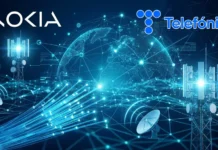Internet of Things experts usually claim that all devices that can be connected will one day be connected. Industry analysts estimate that in only three years there will be 50 billion things connected to the Internet.
Whether or not this figure is correct, there is no doubt that the volume of devices that will be communicating via various kinds of radio-based networks will be vast.
Selecting the most suitable connectivity technology is one of the most critical decisions when a company develops an IoT system. Making the right decision is crucial since the wrong choice can result in poor performance or higher costs in the short term. In the long term, the consequences can include reduced scalability and, at worst, an expensive swap to a more future-proof option.
No one technology fits all
According to Martin Whitlock, CTO at Telenor Connexion, the three main technical requirements for any company looking into IoT connectivity technology are coverage,energy efficiency and data rate. No single technology canexcel in all these aspects, as they are conflicting objectives that every radio technology has to make trade-offs with.
Today there are a variety of technologies for IoT networks, such as traditional cellular (2G/3G/4G), Low Power Wide Area Networks (LPWA), Wi-Fi and Bluetooth. The benefits of cellular networks are excellent opportunities for scalability and future-proofing. While the two main benefits of LPWA devices are that they are energy-efficient and provide good coverage.LPWA technology is suitable for companies that want to manage their own technology, and if global coverage and operator support are not required, LoRa is an attractive alternative.
“It’s a totally licence-free technology, which means that anyone can build a network within certain spectrum bands. The licence-free model does, however, also require good technical know-how and plenty of resources to build and configure a network,” Martin Whitlockexplains.
Operators focus on NB-IoT
Another LPWA technology, one that is closer to what operators such as Telenor normally deal with, is NB-IoT. The abbreviation stands for Narrow Band IoT, and it is similar to LoRa inasmuch as the technology is designed for solutions in which requirements for low energy consumption and a low price are high priorities.
“Devices that use NB-IoT sensors will be able to last 5-10 years without needing a battery replacement, and like LoRa are ideal for usage when very little data is transmitted,” says Martin Whitlock, adding that the technology is suitable for enterpriseswho are looking for solutions with global coverage and where an established operator manages the technology.
3G, 4G and in future 5G are of course also on the list. A CCTV camera, for example, will presumably need to use one of these technologies to be able to transmit images and video streams in real time. And 5G is a technology that will primarily be established in parallel with other technologies and pave the way for the use of additional spectrum including high frequency bands. While 5G will thus be able to permit an extremely high transmission speed, there are also some challenges in building networks with wide-area coverage, as the signals in high frequency bands do not travel very far and are easily obstructed by physical objects.
“In addition to a high transmission speed, it has benefits such as extremely short delay, known as latency, largely thanks to an ability to communicate with other devices in the network in a more efficient way than is possible with 4G, for example. This makes it ideal for, among other things, self-driving cars, where communication with the outside world must take place in real time,” Martin Whitlock explains.
Different companies have different needs
Every company has different needs that require various technical considerations, such as coverage, energy efficiency, security, scalability, and interoperability. These factors determine the choice of IoT technology. The considerations can, according to Whitlock, be identified and grouped into three categories: technical, commercial and ecosystem related, providing companies a structured approach to analysing their requirements.
“Understanding the technical requirements is only the firststep in selecting the most suitable IoT connectivitytechnology. Depending on the IoT business model,trade-offs often must be made among quality of service,cost and scalability, which impact the commercial aspectof the company’s product or service”, says Martin Whitlock.
Cellular networks have the necessary scaleand capability for delivering high quality of service,security and scalability but will typically charge apremium. On the other hand, proprietary LPWA networks that aredeployed as public network, such as Sigfox, can offer costeffectiveand scalable solutions but with limited quality of service.
Deploying a private networkby either the company itself or a system integrator couldbe a cost efficient solution to meet specific requirementsand provide more control of the network, but it is difficultto scale up and replicate globally.
Future-proof solutions
Beyond the specific technical and commercialrequirements, it is important for a strategic investmentsuch as IoT to be part of a healthy ecosystem thatpromises future proofness, global reach andinteroperability. The future proofness of a technologyencompasses longevity to assure its availability in thefuture, as well as long-term economic viability, derivedfrom long-term cost reduction potential.
Global companies need global solutions in order to achieveefficiencies and scale, and avoid having differenttechnologies and network operators for each singlemarket, but also because products sold in one market maybe deployed by the customer in another market wherethey need to work “out of the box”. Global reach andinteroperability (across networks of the same technology)also create a market of larger volume and globalcompetition, both of which help to drive the cost down.
“There is not one single technology or solution that is ideal for all IoT solutions. Companies therefore need to do their homework before implementing an IoT system”, Whitlock concludes.
Martin Whitlock, CTO, Telenor Connexion
As Chief Technology Officer, Martin Whitlock leads Telenor Connexion’s global technology team, driving major technology-enabled initiatives as part of the company’s expanding business strategy. Martin has extensive experience from the telecom industry. Prior to taking on this role, he held the position as Director at Northstream, where he was responsible for strategy assessments, sourcing projects and change management engagements with a broad range of clients. Whitlock holds a Master of Science degree in Industrial Engineering and Management with major in Radio Communications Systems at the Royal Institute of Technology, Stockholm.
About Telenor Connexion
Telenor Connexion designs and operates Internet of Things (IoT) solutions. Building on more than 15 years of experience, a strong solutions portfolio and a collaborative approach, Telenor Connexion makes it easy to realize the value of connected services. Together with customers such as Volvo, Nissan, Scania, Hitachi, Verisure Securitas Direct and Husqvarna, the company has designed smart and innovative IoT solutions deployed across the globe.
Telenor Connexion supports its customers throughout the entire product lifecycle – from solution design to operations and future development. By partnering with Telenor Connexion customers are ensured a reliable and secure end-to-end solution that can evolve over time.Headquarters and tech centre are located in Sweden and the company has regional offices in UK, Germany, US and Japan.Telenor Connexion is wholly owned by Telenor Group, one of the world’s major mobile operators.For more information please visit www.telenorconnexion.com


















